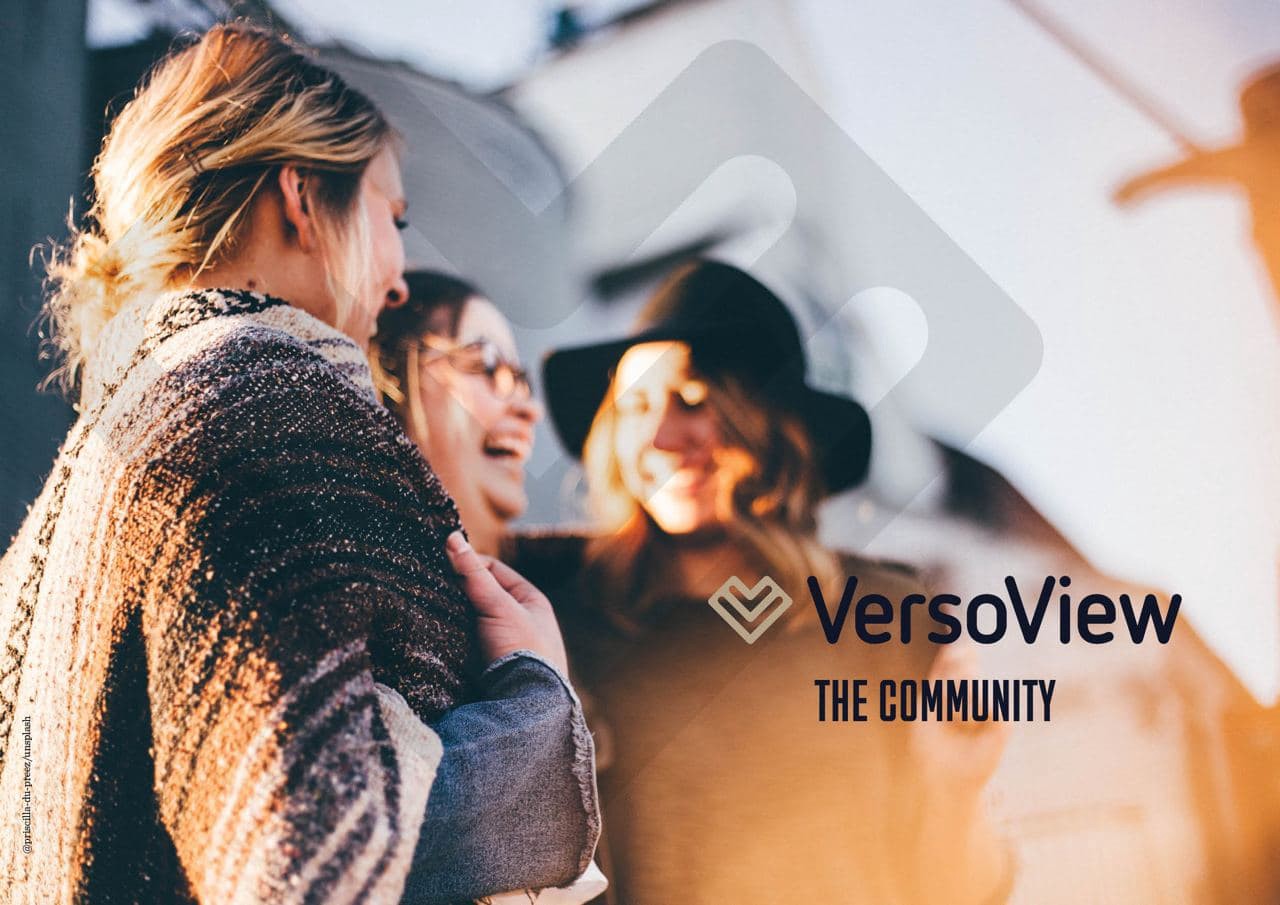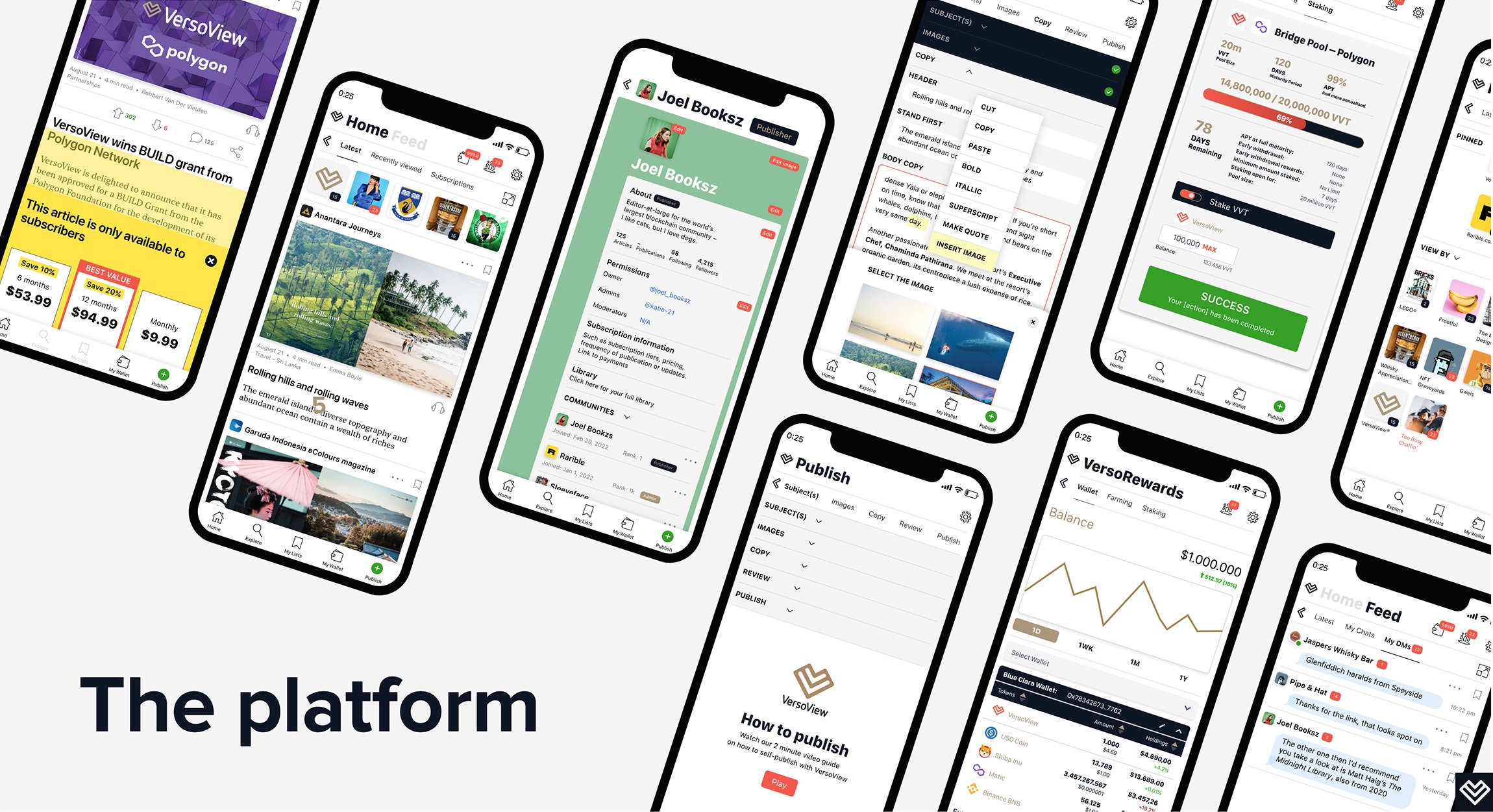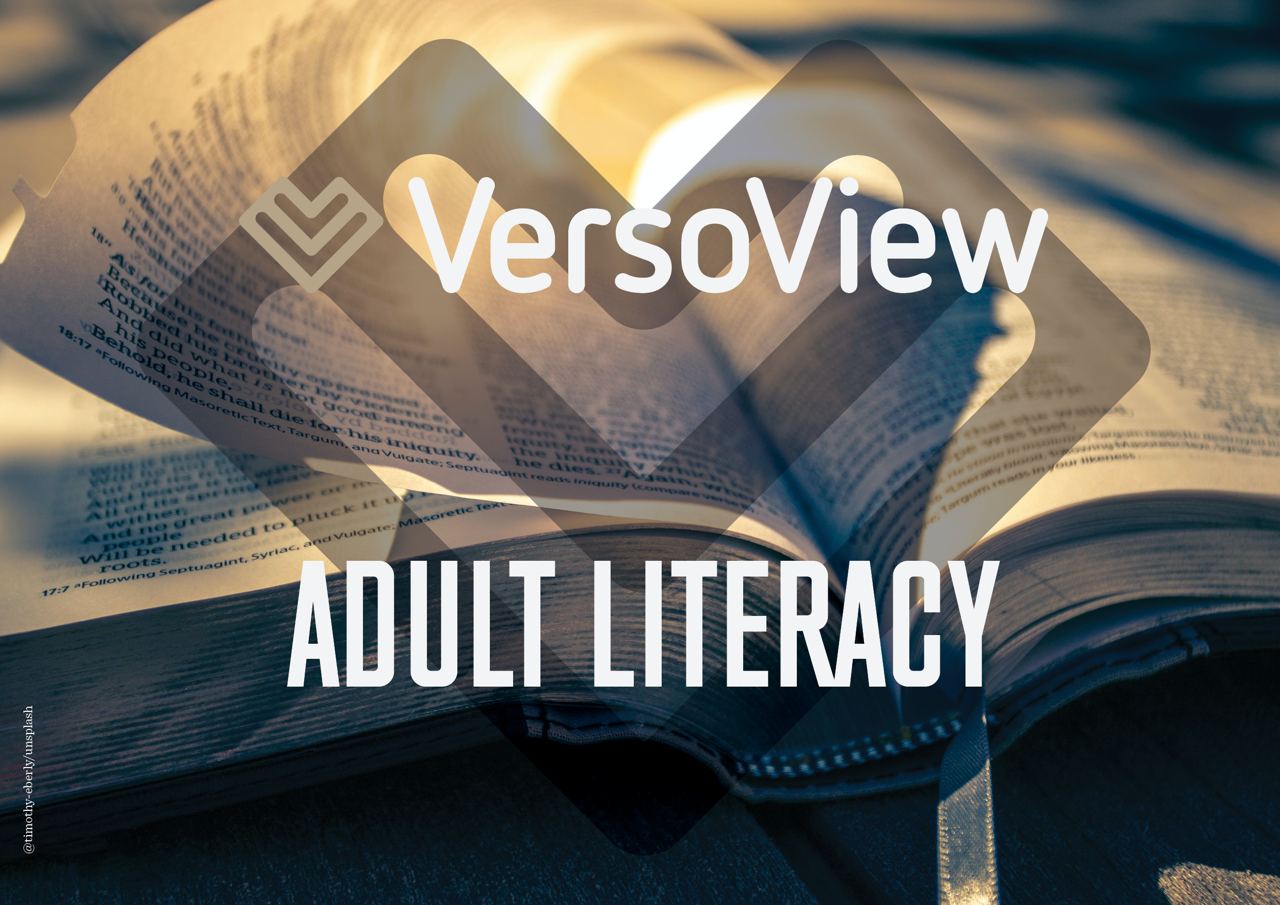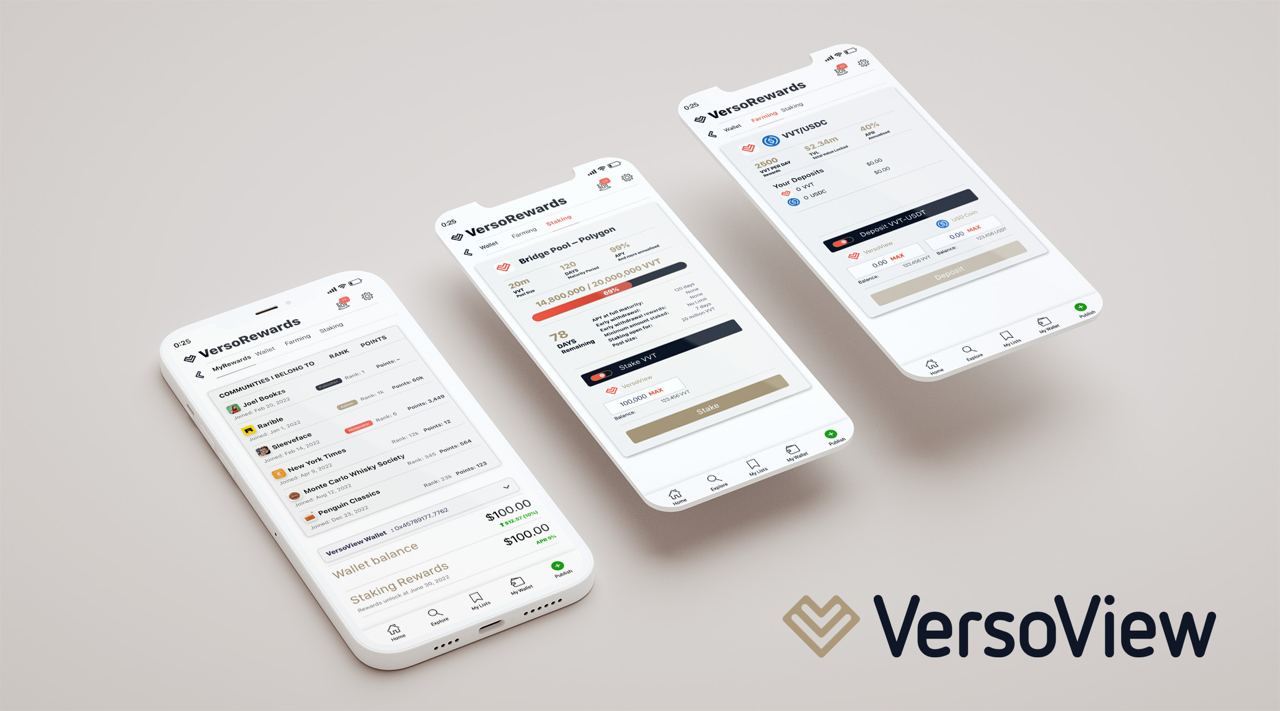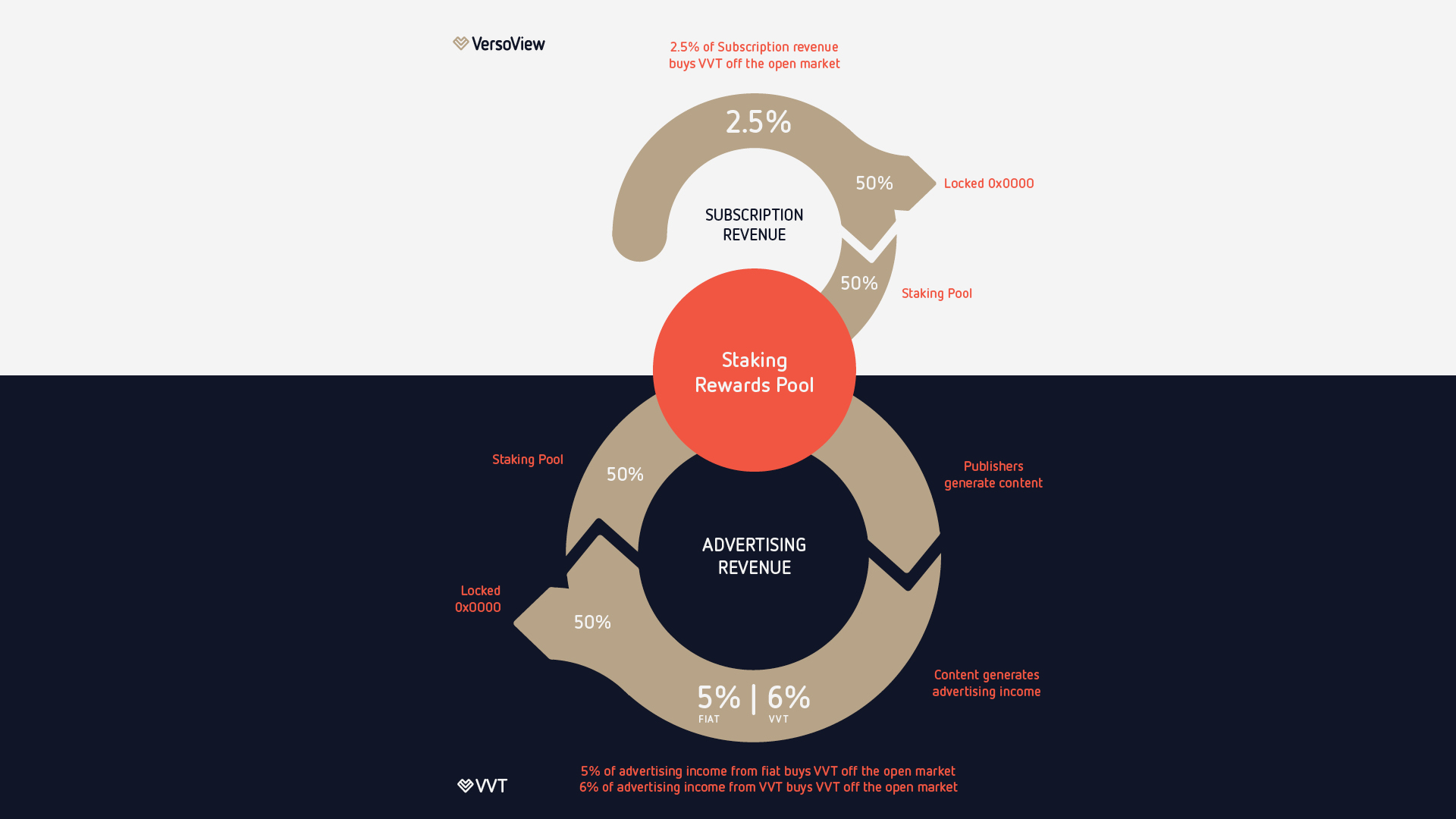In a series of articles, we will build the business case for VersoView. In the previous article, we took the perspective of the reader. In this article, we take it one step further and we take the perspective of the community.
In the previous article, we stated that the reader is the key stakeholder of the VersoView ecosystem.
Community engagement
While consuming content, groups of readers will congregate around stories published on the platform. Attracted by the same topics and interests, groups of readers will organically form communities. VersoView gives the reader the tools to engage with content, brands, content creators and other readers.
A community is the condition of sharing or having attitudes and interests in common such as values, customs or identities. Mankind’s DNA has been hard-wired to forge meaningful connections; it’s as important to our brains as food and water. Our ability to connect to those not far beyond our normal range, street, city or even country, has seen a proliferation of increasingly niche interests that bring people together. Communities are pivotal to our mental wellbeing and form a key component, as well as a natural fit within the VersoView ecosystem.
In its simplest form, a VersoView community will be created from readers of existing publications. The existing reader community in some cases pays the publisher a subscription fee for their digital and or digital/print editions, in other cases, such as corporate publishing or brand magazines, the publications are for free. Through VersoView these communities are welcomed with the OpenView interface that makes the digital reading experience seamless. In addition, these readers become part of the private community of that title, where like-minded souls can share, comment, engage and get rewarded around the subjects they all share a passion for. These communities become more closely bonded by virtue of their reading preferences, and discussion is highly niche based on the publication itself.

Types of communities
When VersoView onboards a client with existing publications, the subscribers follow and communities are born.
A subscriber base may also come from a corporation, whose titles are shared throughout the organization and may contain several tiers within the subscriber base such as employees, shareholders, sales, C-level, etc. Each of these ‘users’ is given access to selected publications from their corporation’s library, with, for example, the C-level pool also using DocuSign APIs within VersoView to sign off materials while the staff use the same DocuSign to confirm their reading of company information. Again, for simplicity’s sake, the staff magazine publishes photos from a bowling night out and the pool of ‘staff subscribers’ comment on the night and share their photos.
On the VersoView platform, we can further distinguish several different types of reader communities. Some examples:
- Communities of common interests formed around publications of a hobby, e.g., playing an acoustic guitar
- Learning communities formed around educational content created by a University
- Brand communities formed around related stories
- Event communities formed around content about the event they’re going to attend
- Employee communities formed around content from the employer and fellow employees
Building Vibrant Communities
To facilitate active and vibrant communities, VersoView offers several tools to engage and also reward within these communities. It’s up to the VersoView publishers and their communities which functionalities will be activated.
The VersoView platform provides the basic functionalities of social media as we know it, but… with a twist.
As a reader, you build a profile, and with that profile, you can engage by giving credits to a story and/or comment on a story. Additionally, it’s possible to highlight key phrases and share these with the community. Other users can comment on a highlighted phrase and start a conversation about this specific aspect. It’s also possible to star-rate a story, publication or content creator. In this way, articles and publications will build their reputation over time and this data will feed the VersoPlus recommendation algorithms based on….
Readers can contribute to the community even more by publishing their own relevant stories. User-generated content is an important part of communities on the VersoView platform. The community can engage with user-generated content as well by giving credits, commenting and sharing these stories.
Social Tokens
This is where the social tokens enter the equation. Based on the terms set by the publisher and the community, a ‘like’ or a ‘credit’ equals an amount of community-specific social tokens. In this way, content-creators and community members may be rewarded for their valuable contributions to the community. Think in terms of rewarding a high-quality content piece, a valuable comment on a story or other meaningful engagement within the community. These social tokens are given value by the customized rewards program created by the publisher. We will elaborate on this at a later stage.
Co-creation
It’s possible for community members to (co-)create reading lists. These are lists of key articles within a specific niche or relevant topic. Community members can give credits and rate these reader lists as well.
Furthermore, for communities, it’s possible to co-create and co-fund their own publications. This means that users on the platform sharing the same love and interests can decide to create a publication about this interest, and co-fund this publication on the VersoView platform.
Additional community functionalities will be added to the VersoView platform over time.
VersoView positions itself at the intersection of content, communities and brands, with the VVT token at the heart of it all. In a series of articles we will build our case and explain the added value of VersoView, and the role of the VVT token, from different stakeholder perspectives:
- General introduction (part I)
- The Reader (part II)
- The Community (part III)
- The Publisher (part IV)
- The Advertiser (part V)
- The Content creator (part VI)
- The Investor (part VII)

